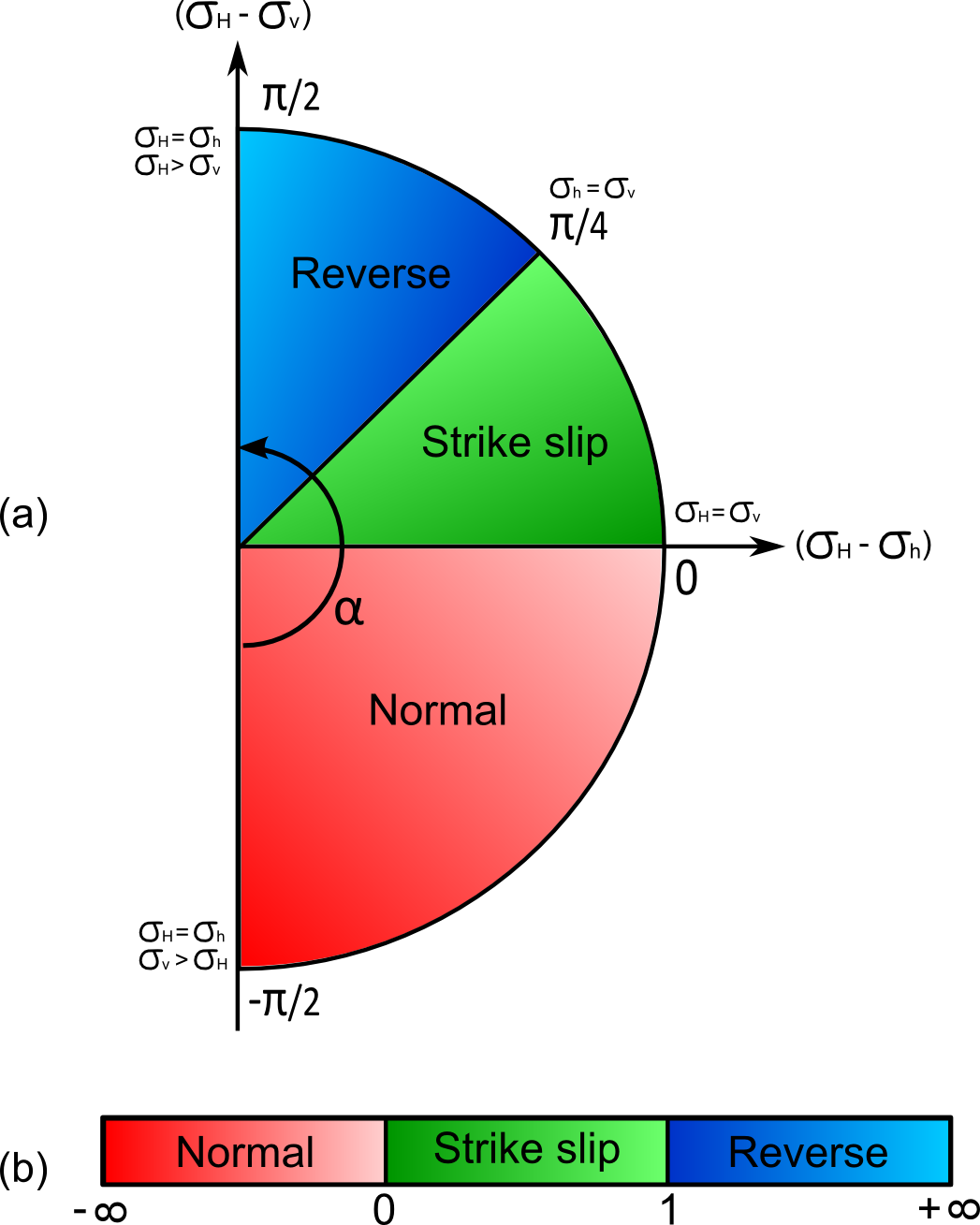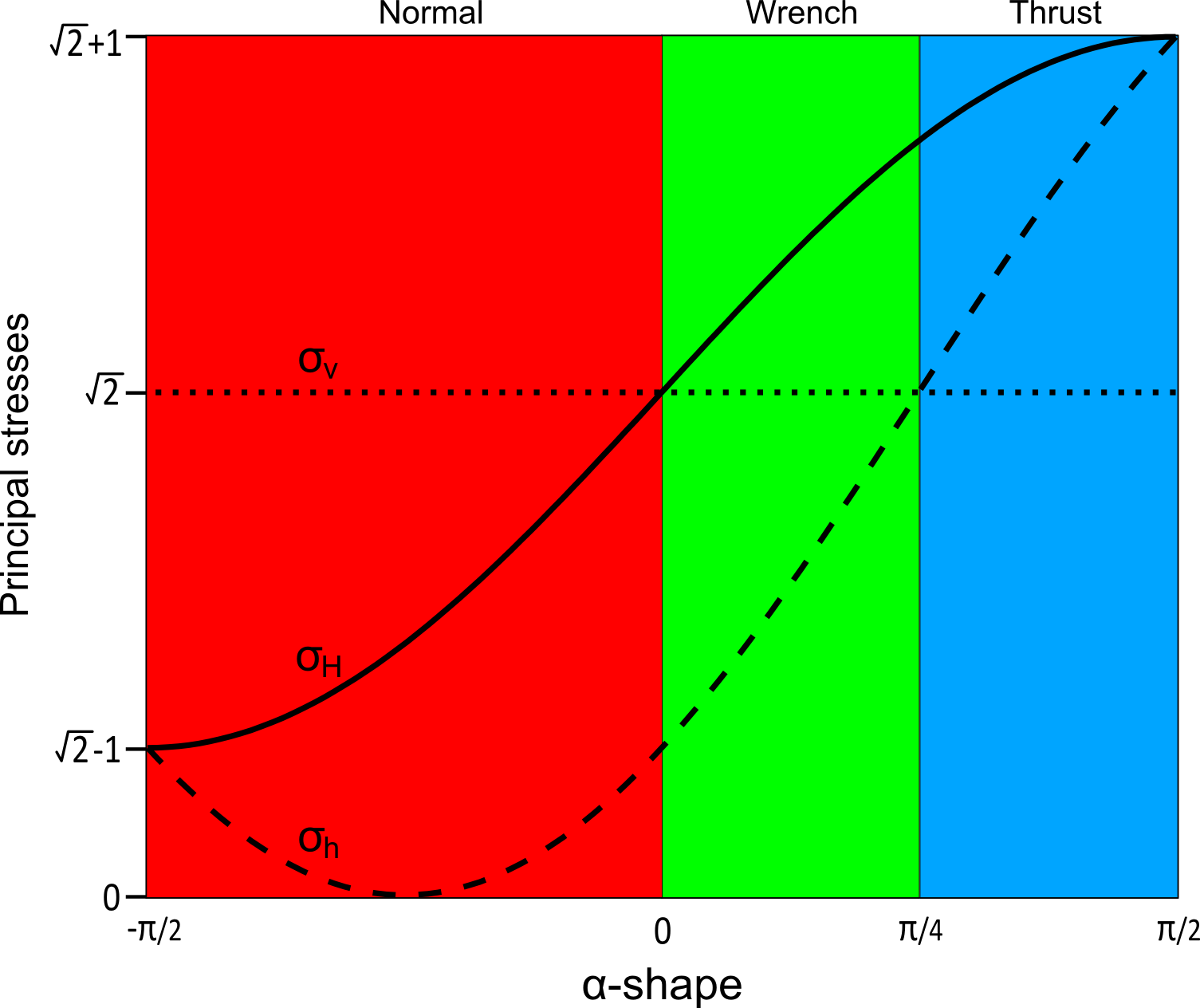Hierarchy
- AndersonianRemote
Implements
Index
Constructors
constructor
Returns AndersonianRemote
Methods
R
Returns number
Rb
Returns number
alpha
Returns number
regime
Returns string
setSH
Parameters
cb: number | Function
Returns any
set
Parameters
cb: number | Function
Returns any
set
Parameters
cb: number | Function
Returns any
set
Parameters
theta: number
Returns any
traction
traction
Parameters
surface: Surface
Returns FlatVectors
A flat array of tractions, one for each triangle making the surface


An Andersonian remote stress is a particular remote stress where one principal axis is vertical. Depending on the magnitude of vertical stress compared to the other two axis (maximum, minimum, intermediate), we have a different stress regimes.
All values are given in engineer convention, meaning that compression is negatif.
If the vertical axis corresponds to